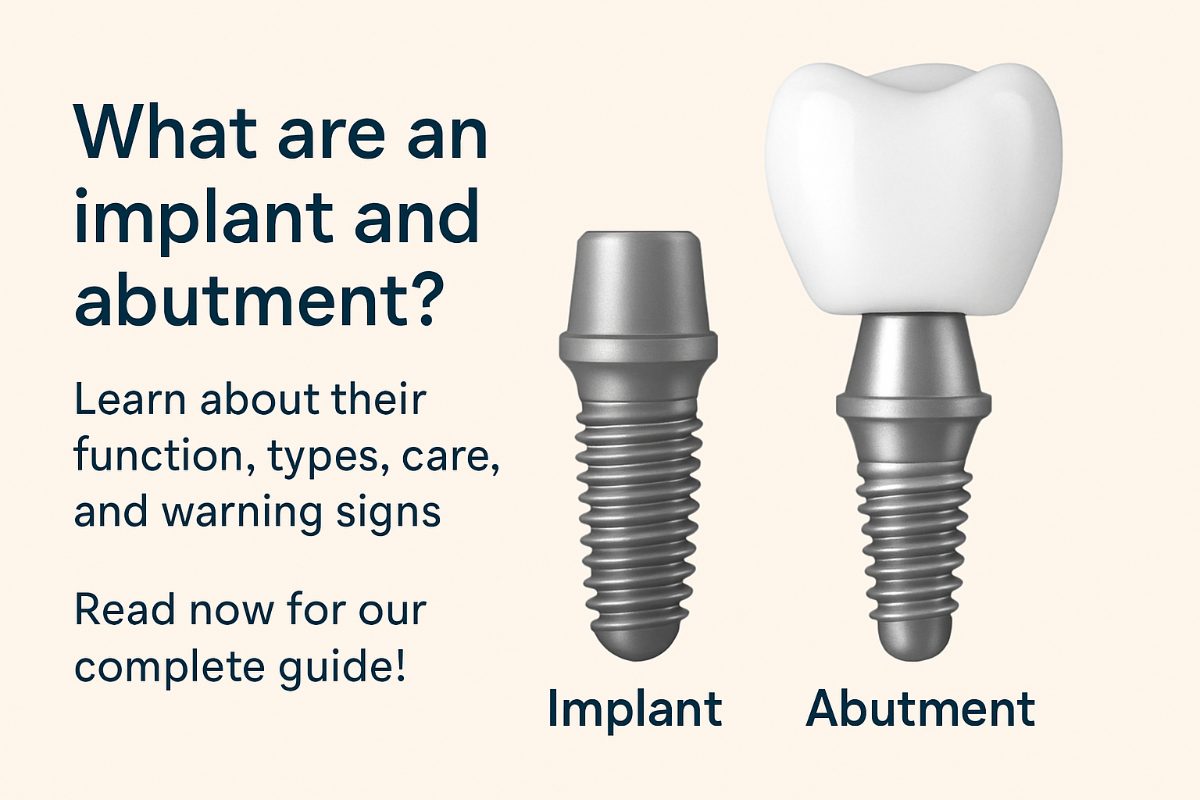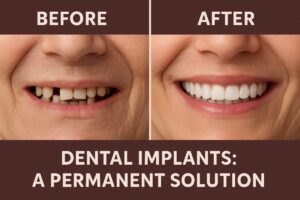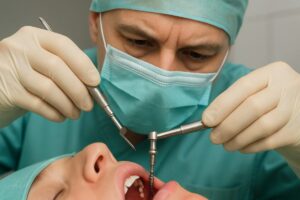Knowing the difference between an implant and abutment matters for the long-term health of a replaced tooth. This guide explains what each part does, how they work together, and the steps to keep your new tooth healthy. Read on for clear, practical next steps you can use when discussing options with your dentist.
This 800-word guide is for anyone considering dental implants or who already has one. You’ll learn definitions, the treatment process, types and materials, daily care, warning signs, costs, and how to choose the right provider for implant and abutment questions in Fort Wayne and Auburn, Indiana.
What Is an Implant and Abutment?
A dental implant is a small titanium post placed into the jawbone to replace a tooth root. An abutment is the connector piece that joins the implant to the final crown. Together, the implant and abutment recreate the form and function of a natural tooth. The implant holds the root, the abutment provides support, and the crown gives you a chewing surface that looks like a tooth.
How the Implant and Abutment Work Together
Step-by-step: from placement to final crown
First, the dentist surgically places the implant into the jawbone. Over weeks to months the bone grows around the implant — a process called osseointegration — which makes the implant stable. Once healed, the abutment is attached to the implant, either in a second minor procedure or at the time of placement. Finally, a custom crown is fitted onto the abutment to restore function and appearance. This sequence is how an implant and abutment in Fort Wayne move from surgery to a finished tooth.
Why the connection matters
The fit between implant and abutment affects stability and load transfer during chewing. A precise connection prevents micro-movement, reduces stress on surrounding bone, and lowers the chance of bacterial leaks that can cause inflammation. A well-fitting implant and abutment in Fort Wayne reduces complications and helps the restoration last longer.
Types of Abutments and When They’re Used
There are several abutment options:
- Stock abutments — pre-made and cost-effective for straightforward cases.
- Custom abutments — shaped to match the patient’s gum line and angulation for better esthetics and fit.
- Straight abutments — used when the implant is well-aligned with the planned crown.
- Angled abutments — used to correct implant tilt and improve crown position.
- Multi-unit abutments — used for fixed full-arch restorations where several implants support one prosthesis.
Your dentist will choose the type based on bone angulation, gum shape, and the final restoration plan for an implant and abutment Auburn patient.
Materials: What Implants and Abutments Are Made Of
Most implants are titanium or titanium alloys because of their strength and proven track record of integrating with bone. Implants and abutments can also be made from zirconia, a ceramic valued for its tooth-like color and reduced metal visibility.
Considerations:
- Titanium: very strong, excellent osseointegration, works well for most cases.
- Zirconia: better esthetics for front teeth and useful for patients with metal sensitivity, but may be less forgiving in some high-load areas.
Care and Maintenance for Your Implant and Abutment
Daily care keeps your implant and abutment healthy. Brush twice daily with a soft-bristled brush, floss or use interdental brushes around the abutment area, and consider an antimicrobial rinse if recommended. Avoid hard biting on unfamiliar restorations until your dentist confirms the fit.
At routine visits your dentist checks crown fit, abutment tightness, gum health around the implant, and takes x-rays as needed to monitor bone levels. Regular professional cleanings and exams are essential to protect your investment in an implant and abutment Fort Wayne.
Common Problems and Warning Signs
Watch for pain, mobility of the crown or implant, persistent swelling, bad taste or drainage, and gum redness. These signs can indicate infection, loosening, or failure. If you notice any of these symptoms around an implant and abutment, call your dentist right away. Treatments range from cleaning and antibiotics to tightening or replacing components, or in rare cases revision surgery.
Costs, Insurance, and Financing Basics
Costs vary by the implant system, abutment type (stock vs. custom), whether bone grafting is needed, and the number of teeth. Insurance often covers part of the crown or certain aspects but may not cover the implant fully. Many practices offer payment plans or third-party financing to spread out the cost of an implant and abutment in Fort Wayne.
Choosing the Right Dentist for Your Implant and Abutment
Look for a dentist with formal implant training, a record of successful cases, and access to modern imaging and lab support. Ask about success rates, the implant systems used, and whether they offer guided placement or digital planning. Bring a list of questions to your consult, including expected timeline, follow-up care, and how they handle complications specific to an implant and abutment Fort Wayne patient.
At Sedation & Implant Dentistry, Dr. David Painter and the team offer advanced implant systems, IV sedation options for comfort, and full-mouth reconstruction experience to support predictable implant and abutment outcomes.
Quick Takeaways
- An implant is the titanium post; an abutment connects the implant to the crown — together they form a full restored tooth.
- Proper fit between implant and abutment is key to stability and long-term success.
- Materials matter: titanium for strength, zirconia for esthetics.
- Daily cleaning and regular dental checks prevent most problems.
- Contact your dentist promptly for pain, mobility, swelling, or drainage around an implant and abutment.
If you’re considering implants or have questions about an existing restoration, schedule a consult to get personalized answers about your implant and abutment needs. Sedation & Implant Dentistry in Fort Wayne and Auburn, IN can review your options and create a care plan that fits your goals and comfort level.






